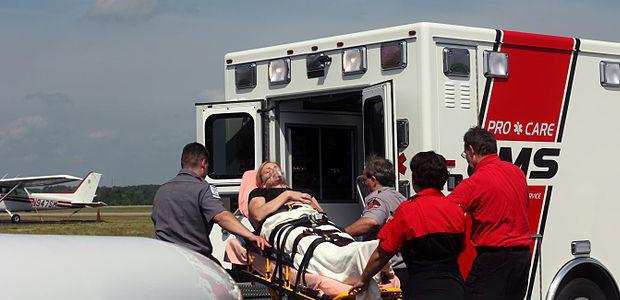While LSBE is considered an outstanding accredited business school, oftentimes it is forgotten that it's part of a research university with faculty addressing issues of regional, national, and even global impact.
Jill Klingner, Associate Professor of Health Care Management and Operations Management in LSBE, has been pursuing a research project since her student days in 2003 when she was part of a research team investigating the quality of rural hospitals.
Over the past twelve years, her study scope has expanded and the project gained the attention of the state and national quality improvement organizations. From initial research, to field studies that were conducted in three states with 25 hospitals, to additional field studies in eight states impacting another 75 hospitals, and expert panel reviews, Klingner's project intensified. Through her diligence and collaborative work with additional researchers and national level agencies and those from various states, answers to a national healthcare need emerged. The need for more complete and timely communication has been identified as a National Patient Safety Goal. Klingner's work, which was funded through the University of Minnesota Rural Health Research Center, has been published in numerous journals and publications, and it resulted in a national action plan.
Thus, starting in 2017, all hospitals across the U.S. will be implementing the Emergency Department (ED) Transfer Communication Measures that improve communication in patient hand-off between hospitals/caregivers, especially that of small rural hospitals, which transfer a higher amount of emergency department patients to other larger urban facilities.
"Emergency care is important in all hospitals, but it is particularly important in rural hospitals," said Klingner. "Because of their size, rural hospitals are less likely to be able to provide more specialized services, such as cardiac catheterization or trauma surgery. Rural residents often need to travel greater distances to get to a hospital initially than urban residents do. In addition, their initial point of contact is less likely to have specialized services and staff found in tertiary care centers, so they are also more likely to be transferred. These size and geographic realities increase the importance of organizing triage, stabilization, and transfer in rural hospitals, which, in turn, suggest that measurement of these processes is an important issue for rural hospitals."
"The ED Transfer Communication Measures aim to provide a means of assessing how well key patient information is communicated from an ED to any healthcare facility," said Klingner. "The measures are applicable to patients with a wide range of medical conditions (e.g., acute myocardial infarction, heart failure, pneumonia, respiratory compromise, and trauma) and are relevant for both internal quality improvement purposes and external reporting to consumers and purchasers. The results of the field tests suggest that significant opportunity exists for improvement on these measures."
"Timely, accurate, and direct communication facilitates the handoff to the receiving facility, provides continuity of care, and avoids medical errors and redundant tests."
LSBE faculty are impacting more than the students they teach. Their research extends their expertise to areas where it is needed. Jill Klingner's research will impact approximately 6,000 hospitals and hundreds of thousands of patient transfers.
